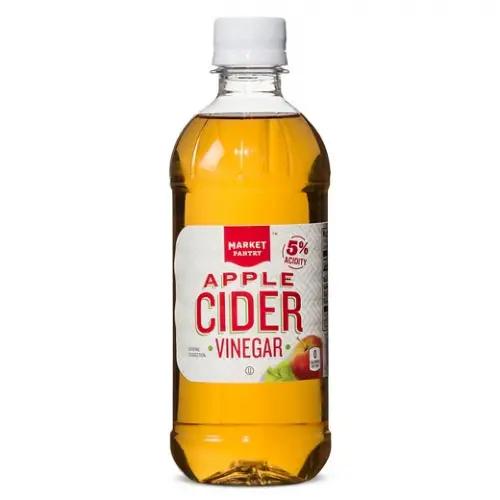We’re pretty sure you don’t sit around and wonder about the different types of vinegar available for cooking! That is unless you’re going to make a special meal that calls for this ingredient.
Vinegar is a very useful and popular ingredient that can provide flavor, cut the saltiness of dishes where you’ve used too much salt and more. It’s a versatile ingredient that can be used in any number of ways.
And it has a very long shelf life, so you can safely keep it in your pantry for years. What’s the problem with vinegar?
Well, there are so many different types of vinegar to choose from! That’s a good thing!
Vinegar is a staple in every household. Aside from its culinary uses, it also has cleaning properties which make it an ideal natural and non-toxic household cleaner. Apple cider vinegar has been gaining popularity lately because of its health benefits, but a lot of people also swear by white wine vinegar and red wine vinegar. What are the differences between these three types of vinegar?
Summary Table
| Apple Cider Vinegar | White Wine Vinegar | Red Wine Vinegar |
| Made by fermenting apple must | Made by fermenting, straining, and aging white wine | Made by fermenting, filtering, and aging red wine |
| Pasteurized apple cider vinegar is a clear gold, whereas unpasteurized apple cider vinegar may look coagulated because of the “mother of vinegar” | Can be a clear and colorless or pale gold | Can be pale red or deep crimson |
| Has a tangy taste with a faint apple flavor | Has a subtle flavor | Quality varieties have a pronounced tangy taste; cheap varieties have a harsh sour flavor |
Descriptions

Apple cider vinegar, or ACV, is a kind of vinegar produced from apple or cider must. First, the apples are pressed to easily separate the liquid, and then bacteria and yeast are mixed with the liquid to begin the fermentation.
The alcohol resulting from the fermentation is then turned into vinegar by acetic acid-forming bacteria.
It has a tangy taste with a faint apple flavor.
Apple cider vinegar can be pasteurized or unpasteurized. The pasteurized version is a clear amber liquid, whereas the unpasteurized kind has a slightly coagulated appearance because of the “mother of vinegar.”
Apple cider vinegar can be combined with water, honey, or fruit juice as a beverage. It can also be used in vinaigrettes, salad dressings, marinades, and chutneys.
Aside from being used in the kitchen, many people also use apple cider vinegar as an ingredient in homemade remedies and beauty products such as facial wash, toner, and natural shampoo.

White wine vinegar is a type of vinegar that is made from white wine. It is made by fermenting, aging, and filtering white wine. It can be transparent or pale gold. Its taste is tangy but is somewhat softer than white vinegar.
Because of its lack of color or dye, white wine vinegar is a common ingredient in making light-colored sauces like Hollandaise and light-colored dressings. It is also great for any sauces that call for a type of vinegar without a harsh taste.
White wine vinegar can be used to pickle vegetables, marinate meat, deglaze pans, make sauces and salsas, and even as an ingredient in some desserts. It is also a famous agent that emphasizes the sweetness of strawberries and melons.

Red wine vinegar is vinegar that is produced from red wine. Quality red wine vinegar goes through fermentation, filtration, and aging for up to two years.
Depending on the type of wine used, the color of the red wine vinegar can be pale red or deep crimson. Quality red wine vinegar has a pronounced, tangy flavor, whereas cheap red wine vinegar has a harsh sour taste.
Red wine vinegar is a staple in the Mediterranean but is used all over the world for salad dressings, pickles, sauces, marinades, or glazes.
Comparison
What, then, is the difference between apple cider vinegar, white wine vinegar, and red wine vinegar?
Apple cider vinegar is made by fermenting apple must. Pasteurized apple cider vinegar is a clear gold liquid, whereas unpasteurized apple cider vinegar may look coagulated because of the “mother of vinegar.”
White wine vinegar, on the other hand, is made by fermenting, straining, and aging white wine. It is a clear and colorless liquid (but can sometimes be pale gold) with a subtle flavor.
Red wine vinegar is made from red wine that has undergone fermentation, filtration, and aging. It can be pale red or deep crimson depending on the type of wine used in its production. Quality red wine vinegar has a pronounced tangy flavor.
Vinegar FAQs
What is Vinegar Made Of?
Each type of vinegar has different ingredients; however, the base ingredients are usually about the same. All vinegar is made with water and acetic acid. Once the ingredients have been combined, vinegar goes through a fermentation process (the yeast eats the sugar and creates alcohol). The vinegar has to go through one more fermentation process, where the alcohol becomes acetic acid. When the liquid is done, the vinegar usually has a sour, strong smell and flavor.
The flavor of each type of vinegar is determined by the ingredients used to make it.
Can Vinegar Go Bad?
You may notice that vinegar’s color may change somewhat, and the liquid may become cloudy. However, these are not signs that the vinegar has gone bad. Because vinegar is so acidic, it has a very long shelf life.
Vinegar should be stored in a cool, dry place away from heat and light. The lid should always be tight on the bottle.
Vinegar, such as apple cider vinegar, may form sediment at the bottom of the bottle, along with a change in color. Thankfully, the vinegar is still OK. If you don’t like the sediment in the bottle, just pour the vinegar through a paper coffee filter, which traps the sediment.





